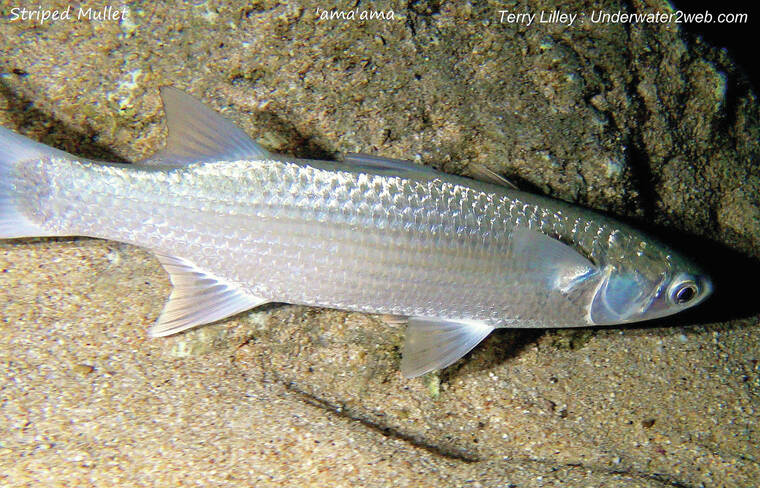Have you ever flown on an airplane between the Hawaiian Islands and seen the sea surface when it looks like there are shiny smooth rivers twisting through the rougher waters?
We now know these ocean sea surface rivers are blown by the trade winds and they contain more fresh water in them than the surrounding salt water. The National Oceanic and Atmospheric Administration (NOAA) tracked some of the sea surface slicks that occur between the west side of Kaua‘i and Ni‘ihau, and they found a great deal of baby fish and invertebrates in these sea surface bodies of water.
This highway for baby fish between Kaua‘i and Ni‘ihau explains a lot about fish species that reproduce on one island, but may drift in currents and grow up on a totally different island. I spent the day at Salt Pond on the west side and met a native Hawaiian gal from Ni‘ihau that was writing a book about the “forbidden island.”
She showed me some incredible drawings of fish from Ni‘ihau that an old time fisherman drew. The drawing included the ‘ama‘ama (striped mullet) and the moi (threadfin mullet) which really stunned me. These silver colored shallow water fish reproduce in lagoons and estuaries, where there is a mixture of fresh and salt water but there are no such lagoons on Ni‘ihau or Lehu Rock. The islands are very dry and lack the rain to make estuaries and wetlands like we have on Kaua‘i, so why are there mullets living in Ni‘ihau?
Mullets have several different names as they mature. They have one Hawaiian name for the babies of which are all females, one name for the juveniles when they are changing sex and a different name for the adults. In Ni‘ihau we could only find drawings and names for the adults.
Quite the mystery until the sea surface slicks were discovered to be filled with baby fish. We now believe that the mullets reproduce in the wetlands on the west side, then the fertilized eggs are caught up in the wind blown sea surface slicks. It may take months for them to blow all the way over to Ni‘ihau where they arrive as juvenile fish, then drop down to the bottom and grow up into adults.
The whole ability of a fish species to reproduce in one area, then their offspring drift in currents to a completely different part of the island or even a different island makes it very difficult to manage that fish species. If a fish at Tunnels Reef becomes rare, it may not be due to a problem with the reef at Tunnels.
We found that most of the fish species at Tunnels are produced in Anini Lagoon, then the babies drift down to Tunnels driven by the ongoing trade winds. This means that a possible pollution problem at ‘Anini could affect the reproduction of fish that may populate in Tunnels 20 miles away or even a pollution problem on the west side may affect the fish populations in Ni‘ihau.
Our coral reefs here in Hawai‘i are very complex and we have a lot of wind, currents and waves that may mix up the marine life, so we really need to do DNA studies to discover where each species reproduces and where the offspring eventually grow up. This way we can better manage our coastal marine life.
You can see all of these fish species in action in my movie “The Worlds Guide To Hawaiian Reef Fish” that will be posted soon for free on my YouTube at Underwater2web.
•••
Terry Lilley is a marine biologist living in Hanalei, Kaua‘i and co-founder of Reef Guardians Hawai‘i, a nonprofit on a mission to provide education and resources to protect the coral reef. To donate to Reef Guardians Hawaii go to www.reefguardianshawaii.org.





